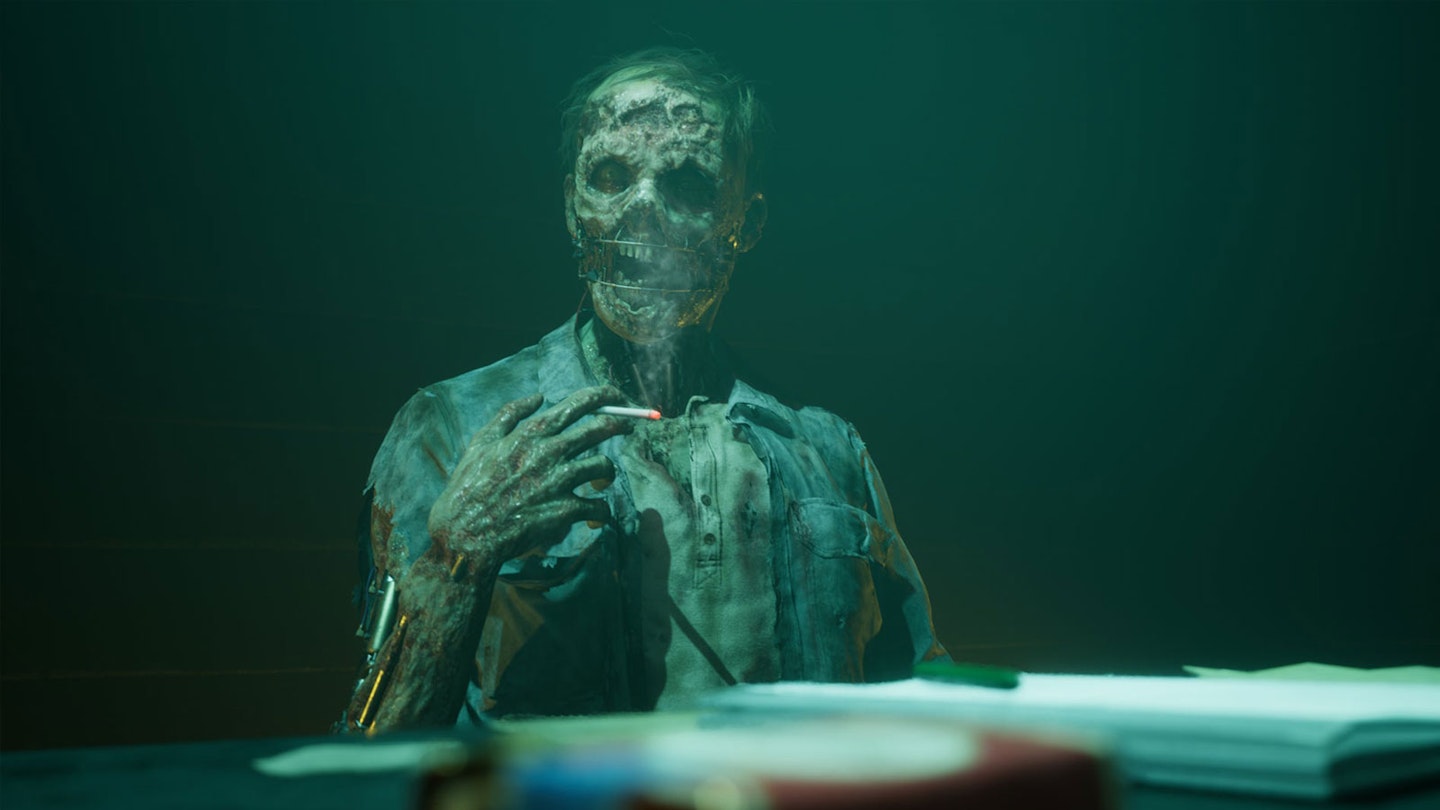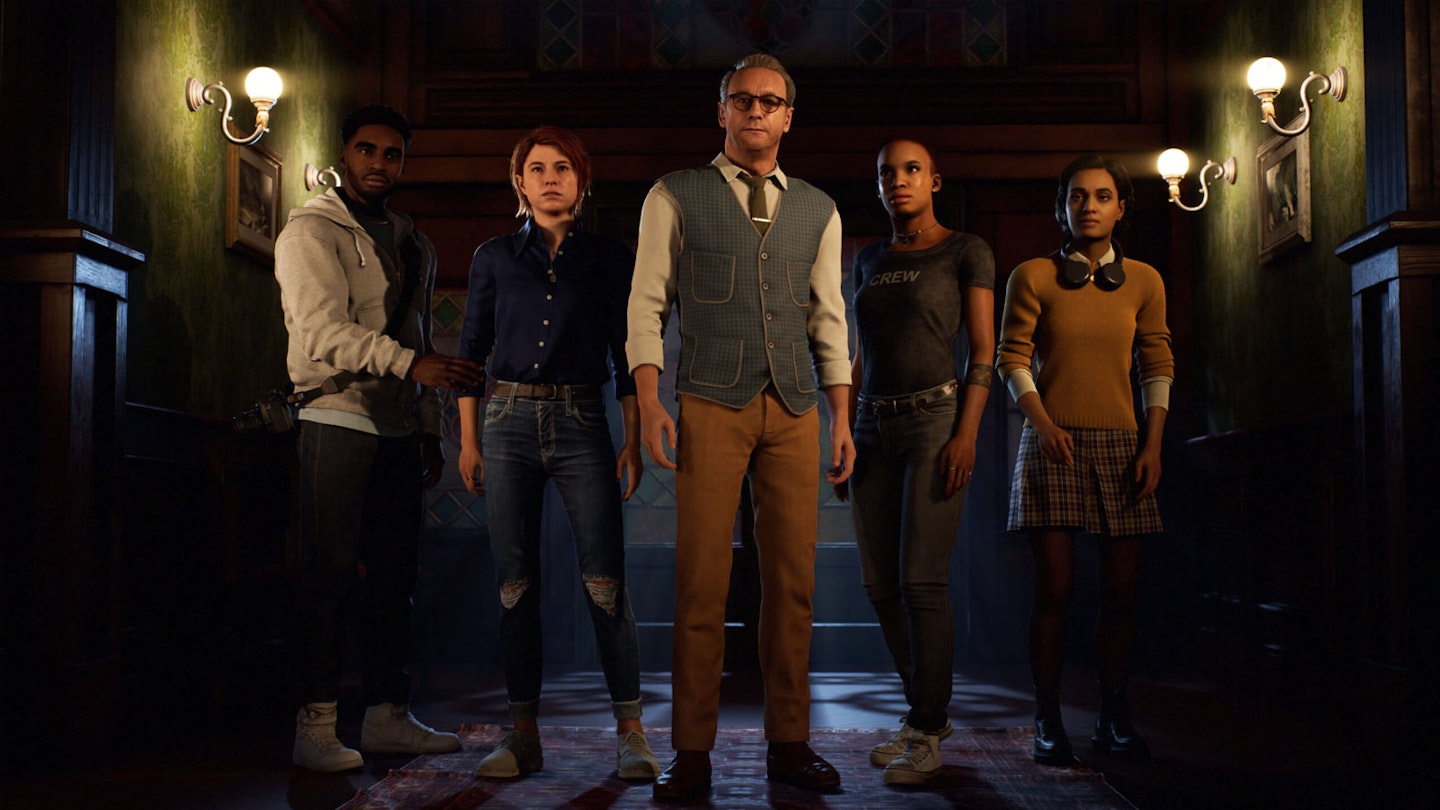Platforms: PS5, PS4, Xbox Series X, Xbox One, PC
The Dark Pictures series has become a yearly treat for horror fans, a slice of cinematic spookiness with branching storylines, usually arriving just in time to snatch the Halloween throne. That each game typically boasts run times perfect for a movie night play session with friends, with every hapless in-game character’s fate governed by a different player, is also key to their success. With The Devil In Me, billed as the “season finale” of the anthology to date, developer Supermassive Games has tried to move the series out of that reliable, familiar groove, to better and worse effect.
Beyond missing that Halloween launch window, the most immediate change is the abandoning of the overt supernatural premises that have framed past instalments, in favour of tapping into the true crime zeitgeist. Here, players control a documentary film crew, shooting an investigation into “America’s first serial killer”, H. H. Holmes. The real-world Holmes claimed to have killed 27 people in the late 1800s, though was speculated to have been involved in up to 200 murders. He also built a hotel in Chicago that the press of the time dubbed his “Murder Castle”, claiming (falsely) that it was filled with fatal traps and shifting walls.

The Devil In Me leans into the popularly mythologised version of Holmes, though, so when director Charlie (Paul Kaye) and his staff – presenter Kate (Jessie Buckley), camera operator Mark (Fehinti Balogun), lighting tech Jamie (Gloria Obianyo), and intern Erin (Nikki Patel) – are invited to shoot in a replica of the Murder Castle built on a genre-appropriate mist-shrouded island, you know things are going to go rapidly downhill. To a one, the cast hit that sweet spot of being utterly unaware they’re in a horror movie, making their often terrible decisions – leaving the group, having sex, and generally breaking every one of the Scream rules – all that more delicious for genre-savvy players and audiences. Unfortunately, they’re almost all thoroughly unlikeable, with even nice guy Mark and naive Erin often delivering snarky, unpleasant lines that distance them from the player as much as their peers.
By making The Devil In Me more like a conventional horror game, the pacing has been ruined.
Early on, it’s apparent that The Devil In Me is more, well, video game-y than its predecessors. Yes, there are all the usual decisions to be made, relationships to manage, and occasional quick time events to master that have defined the Dark Pictures Anthology since its first instalment, Man Of Medan. However, the characters are now more mobile, scaling and exploring environments in ways that aren’t terribly far removed from the likes of Uncharted, and faced with more elaborate environmental puzzles to solve. The likes of restoring power to facilities or shifting objects around to get to higher platforms are frequent obstacles, making this feel closer to early Resident Evil games in places.
This is amplified by the inclusion of an inventory system for the first time in the series. It’s a minimal version of one, with each character having one or two signature items (Charlie can use a business card to jimmy simple catch locks open, for instance), while the occasional single-use item is found and used at exceedingly obvious points, but it does expand the material gameplay mechanics.
Sadly, by making The Devil In Me more like a conventional horror game, the pacing has been ruined. Lengthy stretches of exploring the island’s grounds or trying to avoid a Holmes lookalike (who, predictably, is hunting the new guests at the Murder Castle redux) often make the affair feel more padded than tense. While prior entries have perhaps been a bit too cinematic and cutscene-heavy, that more structured approach meant they were perfect for the aforementioned movie night scenario. The Devil In Me falls victim to the same problem as The Quarry – too long for one group of players to get through in a single session, thus undermining one of the series’ core strengths.
For single players, the experience does at least hold up, with the fear factor growing over multiple sessions. Supermassive’s Murder Castle is brilliantly realised, packed with cursed animatronics that terrify even when you know they’re going to move, while the twisted, unreliable layout of the building and the sense of being watched by the off-camera figure masterminding everything combine to bristlingly unsettling effect. Compared to the series’ previous entries though, less was more, and by adding more to The Devil In Me – more interaction, more exploration, more run time – the overall impact has been lessened.
